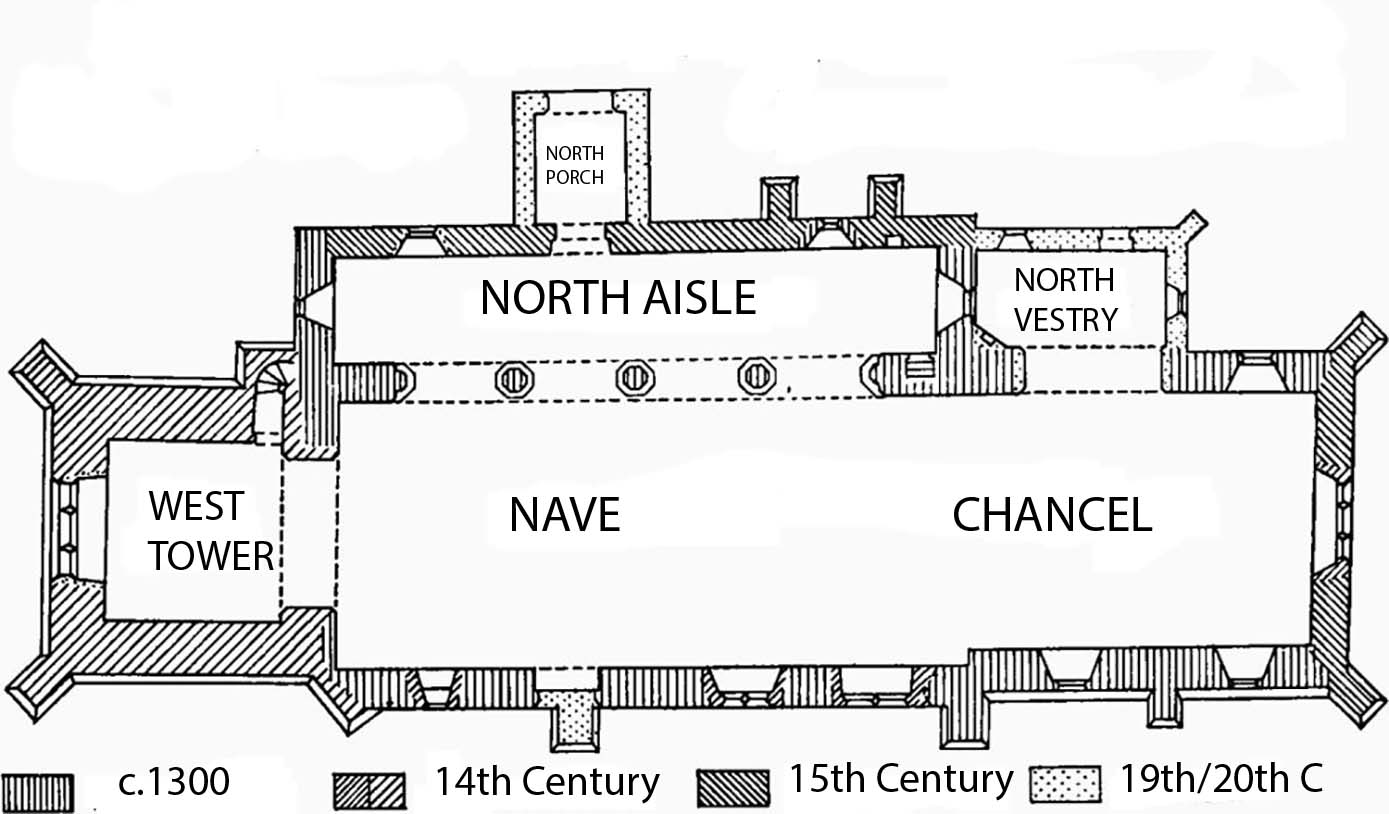
St Dubricius
St Dubricius church is 13th/14th century and is constructed of the local sandstone. The roof is covered with stone slates and tiles. It is likely that undated quarrying immediately north of church was the source of the stone.
The Nave (14m. by 6m) has a north arcade of c. 1300 and is of four bays with two-centred arches of two chamfered orders, with octagonal piers and semi-octagonal responds, with moulded capitals and chamfered bases.
There is a narrow aisle of circa 1300, and the west tower was added in the 14th century.

St Dubricius plan
The Roof of the chancel is of mid 15th-century date and of scissor-beam and collar construction with each length of the main timbers stop-chamfered. The nave roof is of the same date and construction but with the collars omitted. Richard of of Rotherham is recorded as having rebuilt the chancel in about 1430, and now-lost coloured glass inserted in the east window was put in by him, with a Latin text translated 'pray for the soul of Richard Rotherham'.
Richard was Vicar of Lugwardine and Chancellor of the Diocese of Hereford. The association of Lugwardine with churches in Archenfield was well-established. In 1204 King John granted to Alard the Vicarage of Lugwardine together with the 'chapel of Urchenefeld'.
Elizabeth I granted 'our right to the presentation of Lugwardyn and all our chapels of langarren, henthlann and sci winards annexed to the same church or depandent upon it'. Similarly the Glebe Terrier of 1607 is a 'Note of all the portions of Tythes Belonging into our Church or Chappel of Hentland aforesaid being 'annexed unto Lugwardine'. In 1870 Kelly's directory recorded that the living of Hentland was a vicarage 'seperated from from the vicarage of Lugwardine'. JP Seddon extensively renovated the church in the mid 19th century.